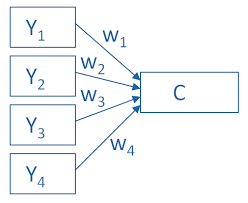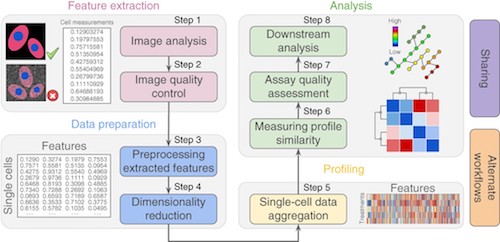How to Reduce the Number of Variables to Analyze
When you are looking at data sets, it is normal that you find some that have more than a thousand variables. So, while you may be compelled to continue with this complexity taking advantage of the speed of computers, you should stop right there. The reality is that, sometimes, when this occurs and you maintain all the dataset as it is, you end up with a vast array of poor results. So, how can you reduce the number of variables to analyze?

Discover everything you need to know about statistics.
Why You Should Select Variables Before Analyzing The Data
One of the things that many students don’t realize is that working with a lot of data is a problem. After all, everything they can think of is on how to plunge into a data analysis and don’t even think about the step they are taking. However, this is something that should always be avoided.
Whenever you have a new dataset, the first thing you need to do is to think about what you want to get from it. When you don’t take this step, you will probably end up with biased results.
Looking for an online z calculator?

It is important that you are aware that there are many different and powerful techniques that you can use when dealing with many variables. One example is the multiple regression that allows you to include a very large number of predictor variables with the goal of maximizing the explanatory power of the model. But this isn’t the only one. You also have factor analysis, for example. However, and while it may nearly always produce a solution, it may well be a nonsense solution.
Ultimately, factor analysis is designed to identify sets of variables that are tapping the same underlying phenomenon. And it does this by examining the patterns of correlations among a set of variables.
Factor analysis is based on the assumption that the variables that are identified as belonging to a factor are really measuring the same thing. So, the factor itself is driving the responses on the individual variables. Therefore, they should not be causally related to each other.
Unfortunately, factor analysis cannot distinguish between variables that are causally related and those that are non-causally related. This can result in variables being grouped together when they should not be.
Make sure to use our simple a value calculator.
How to Reduce the Number of Variables to Analyze

When you want to reduce the number of variables to analyze, you just need to think about the research question that you are trying to answer and to determine which data is directed.
One of the ways that you have to do this is to simply draw diagrams of the model that you want to evaluate before you start analyzing the data. This way, you will need to first determine the dependent variable and only then the independent variable. In addition, you should also determine the likely mechanisms by which the independent and dependent variables might be related.
Check out our easy z stat calculator.
Notice that you should make some attempt to include variables that make sense together. In addition, you should avoid including variables where any correlation is more likely due to causal relationships than to the variables having something in common at the conceptual level.